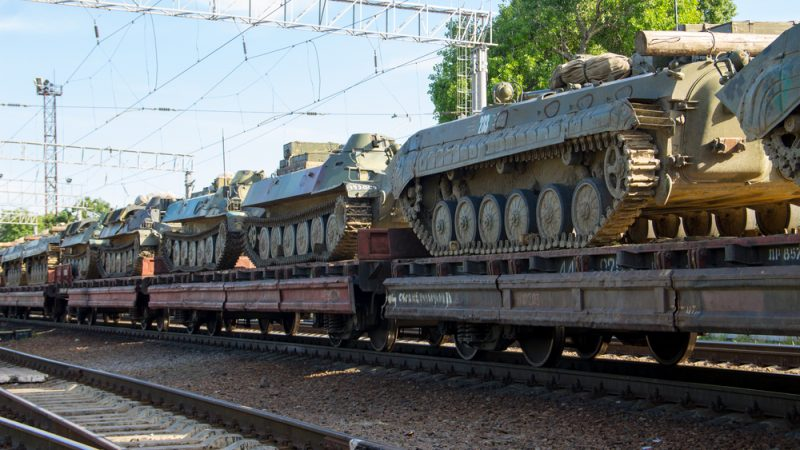
The European Peace Facility (EPF), the EU’s off-budget fund to replace member states’ arms donations provided to Ukraine, is struggling to cover the bulk of incoming reimbursement requests, EURACTIV has learnt.
After a political agreement between EU ambassadors on Wednesday (12 October), a sixth €500 million tranche set to be green-lighted by EU foreign ministers on Monday (17 October) would raise the pot from €2.6 billion in lethal and non-lethal aid to a total of €3.1 billion.
In a ‘watershed moment’ for its defence policy, just days after Russia invaded Ukraine in February, the EU agreed to unblock an initial €500 million tranche for member states to encourage them to buy arms for Ukraine’s armed forces, promising to cover some, but not all, of the costs.
However, according to several EU diplomats, dissatisfaction is currently simmering among some members of the bloc about how they will be reimbursed, and this week had nearly derailed the agreement to proceed with the next steps.
The initial formula for the payback scheme was to compare countries’ requests against the money earmarked to reimburse Ukrainian-requested arms donations.
For the initial €500 million tranche, the EPF’s so-called ‘clearance house’, which is coordinating the efforts, received about €600 million in requests.
But for the €1.5 billion pot, it received about €3.3 billion in requests, with Poland responsible for over half of the receipts.
With the increased demand, the reimbursement rate dropped from initially 85% to roughly 46% of the asks, according to estimates provided by several member states to EURACTIV.
The decrease has especially infuriated Poland, one of the EU’s largest arms donors to Ukraine, with Warsaw blocking an agreement to disburse the second tranche, hoping to negotiate a higher disbursement rate.
“For them, below 50% is too little,” a Western EU diplomat said as EU envoys met on Wednesday evening, adding that “the Poles are holding the key to unlocking the €1.5 billion and payments to Slovakia in 2022 and themselves in 2023”.
Poland so far has handed over a considerable amount of tanks, howitzers, anti-aircraft arms and other military equipment to Ukraine but says it has still not received replacement tanks from Germany, which Berlin promised Warsaw to compensate for the military aid provided to Ukraine.
Ultimately, Warsaw gave in and agreed to the 46% reimbursement rate on the €1.5 billion second tranche, according to EU diplomats, opening the way for disbursements to start.
But the delays left numerous member states impatient. EURACTIV understands that no disbursements have been paid and are only about to commence this autumn.
Portugal is among those to be first in line, with a relatively low payment in the thousands, EU diplomats confirmed.
“We need the pre-payments to order the equipment we lack or want to provide,” one EU diplomat said.
Not for eternity
But seven months into Russia’s invasion, Ukrainian demands are increasing. Kyiv has reworked its weapons wish list from Western countries while troops preparing to dig in for bitter winter fighting.
At the start of the war, the €5.7 billion off-budget financial instrument was described as the ‘perfect vehicle’ since EU treaties prohibit the bloc from using its regular multiannual budget to fund operations with military or defence implications.
Most EU officials and diplomats are convinced that the debate about topping up the fund will come sooner rather than later, but ideally by the end of this year, with some member states suggesting doubling its total firepower.
The fund has also been used for smaller initiatives such as military aid to Georgia, Moldova or the bloc’s training mission in Mozambique, which has contributed to shrink the financial scope of a financial instrument that was initially meant to suffice until 2027.
This comes especially as EU foreign ministers are also expected to agree next week to fund part of the budget for the bloc’s new EU military assistance mission for Ukraine, partially from the EPF budget.
